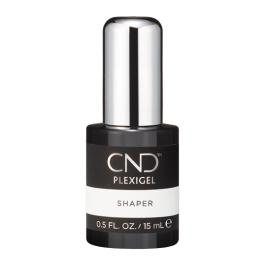The Nails world over the years has become more and more filled with terms and categories to send anyone, expert or not, into a tizzy. Let’s go in order…
What is Semipermanent:
It is a polish that unlike a classic Nail Polish, isphoto-hardening and therefore requires exposure to the rays of a Professional UV Lamp to “dry” and “stick” perfectly on the natural nail.
Its main technical features are:
- 20% to 30% gel content;
- removal with appropriate removal fluid (not acetone);
- 14-21 day hold;
- flexibility.
There are a plethora of brands on the market that produce “semi-permanent” but not all of them can be defined as such! These are mostly glazes with a very high gel content so they can no longer be called semi-permanent. In fact, these are recognizable by two main aspects: removal must be done mechanically with a file or bur, and the hold is greater over time. While these may be advantageous features for some, the same cannot be for those who choose a semipermanent service that does not “stress” the nail rather respects its naturalness. Semipermanent was born (the first born in the world is Shellac) precisely to have a product that respects the natural nail and lasts longer than a classic nail polish, not to be a gel!
But then what are all those definitions that have sprung up in recent years and what is the difference?

SEMI-REINFORCED
A strengthened semipermanent is simply a semipermanent “resting” on a more structured base, or a semipermanent with a slightly higher gel content (about 40 percent). It will definitely have a longer shelf life and is mostly recommended for those who unfortunately semipermanent does not hold or use their hands in such a way that they need more structure and less flexibility (flexibility leads to raising or chipping). In some cases, removal must be done mechanically.
CND has recently made a product called Plexigel Shaper that is designed precisely to create a reinforced structure, with a bit of gel added just to address these issues. Shaper sits on the natural nail and removal can be done with CND’s solvent or mechanically (depending on how much time you have!).

SEMI-GEL
Semi-gel is nothing but a semi-permanent with a high amount of gel but which is not totally a gel … we are between 60% and 70% gel! Tightness exceeds 3 weeks.
Removal in this case is done only by mechanical method, file or cutter, and its elasticity is greatly reduced.
Warning: most of the “semipermanents” on the market pass themselves off as such but are semi-gel! You recognize them easily because the only way to remove them is to use a mechanical method.
CND recently came out with a product called Plexigel Builder, a product suitable for lengthening and reconstruction, which is used in combination with semipermanent, which is a gel but not quite. It has a very good hold even in reconstruction. Its removal is to be done by mechanical method, better the cutter you do it faster!

Is it a little clearer to you now how the world of semipermanent or supposed semipermanent is divided?
Leave us a comment!

